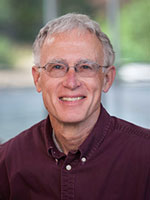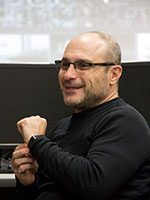
The Pedestrian Crossing Experience in Minnesota
About the Webinar
In theory, pedestrians in Minnesota have the all the power. MN Statute 169.21 states: “Where traffic-control signals are not in place or in operation, the driver of a vehicle shall stop to yield the right-of-way to a pedestrian crossing the roadway within a marked crosswalk or at an intersection with no marked crosswalk.” Unfortunately, reality is a very different story.
This webinar featured two presentations exploring the pedestrian experience in urban and rural areas across Minnesota. The first presentation reviewed a series of research projects conducted by the U's Minnesota Traffic Observatory. It highlighted findings on the understanding of, compliance with, and effectiveness of different pedestrian crossing treatments, ranging from the most simple unmarked crossing to more elaborate systems of pedestrian signals and pedestrian hybrid beacons.
The second presentation discussed a research project focused on pedestrian activity and safety on four Anishinaabe reservations in Minnesota. The project, conducted by U of M researchers in collaboration with MnDOT and the Advocacy Council on Tribal Transportation, focused on observing pedestrian activity and identifying countermeasures to reduce pedestrian risk at 10 priority locations identified by tribal transportation managers.
The webinar was held in conjunction with a meeting of the CTS Transportation Safety and Traffic Flow Council.
Webinar Recording & Materials
- Watch the recording
- Hourdos's presentation slides (PDF)
- Petesch and Lindsey's presentation slides (PDF)
Speakers


John Hourdos is the director of the Minnesota Traffic Observatory (MTO) at the University of Minnesota. His expertise is in the area of intelligent transportation systems for traffic control and safety, with special emphasis on problems involving traffic modeling and simulation. His current research focuses on traffic operations optimization, evaluation of active traffic management systems, and macro-meso-micro hybrid simulation modeling and applications. He designed and implemented a unique field laboratory on the highest-crash location of freeway in Minnesota, and he and his MTO team recently developed the first connected vehicle testbed in the state.
Greg Lindsey is a professor at the University of Minnesota's Humphrey School of Public Affairs. He specializes in environmental planning, policy, and management. His current research involves nonmotorized transportation systems, including bicycle and pedestrian infrastructure, and studies of relationships between the built environment and active transportation and physical activity.Lindsey earned his doctorate and a master's degree in geography and environmental engineering at the Johns Hopkins University. He also received a master's degree in geography and environmental studies from Northeastern Illinois University. His bachelor's degree is in urban planning and is from the University of Illinois in Urbana-Champaign.

Michael Petesch is the pedestrian and bicyclist data coordinator for the Minnesota Department of Transportation, where he manages and coordinates active transportation data efforts. Working with many partners across Minnesota, Michael uses his environmental and transportation planning degrees (BS from UW Stevens Point and MURP from the Humphrey School of Public Affairs, University of Minnesota) to make it safer, easier, and more convenient for people of all ages and abilities to walk, bike, and roll where they need to go.
Credit
Attendees are eligible for 2.0 American Institute of Certified Planners (AICP) maintenance credits.